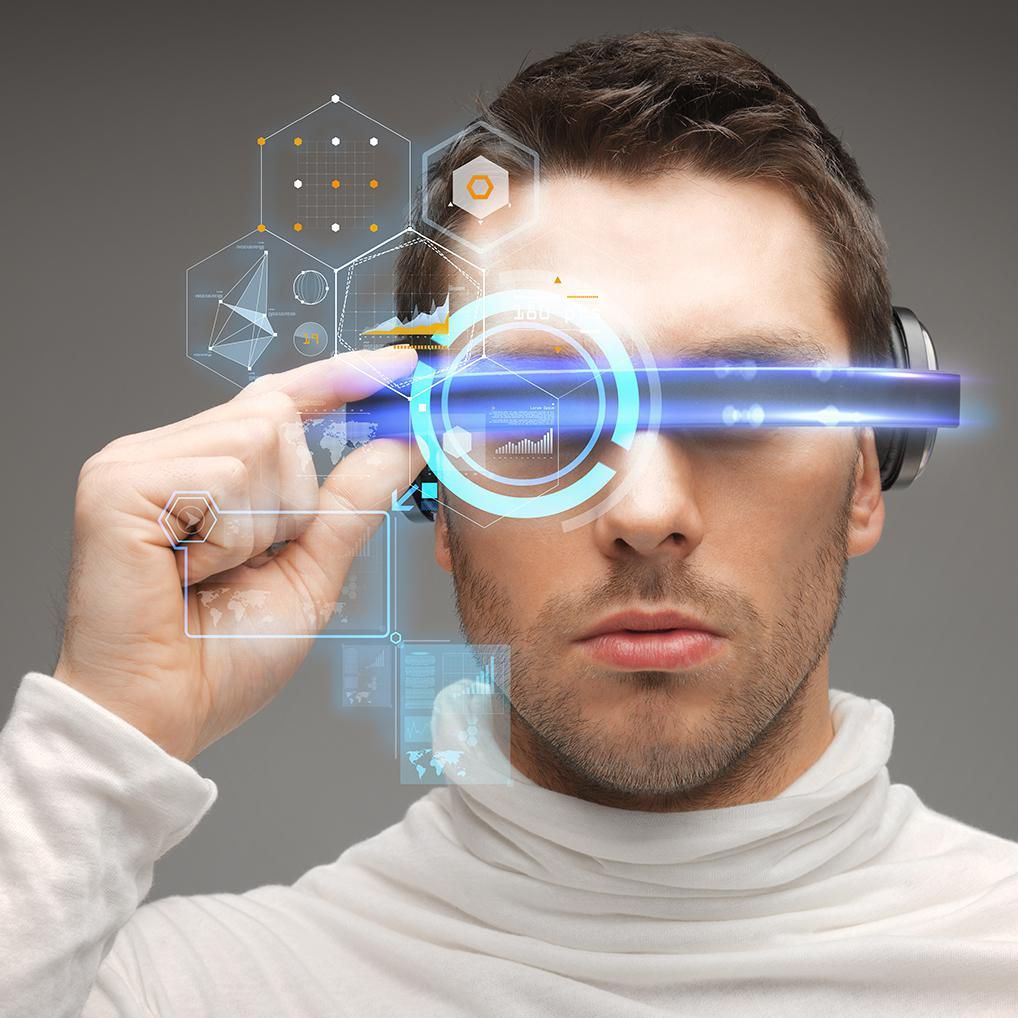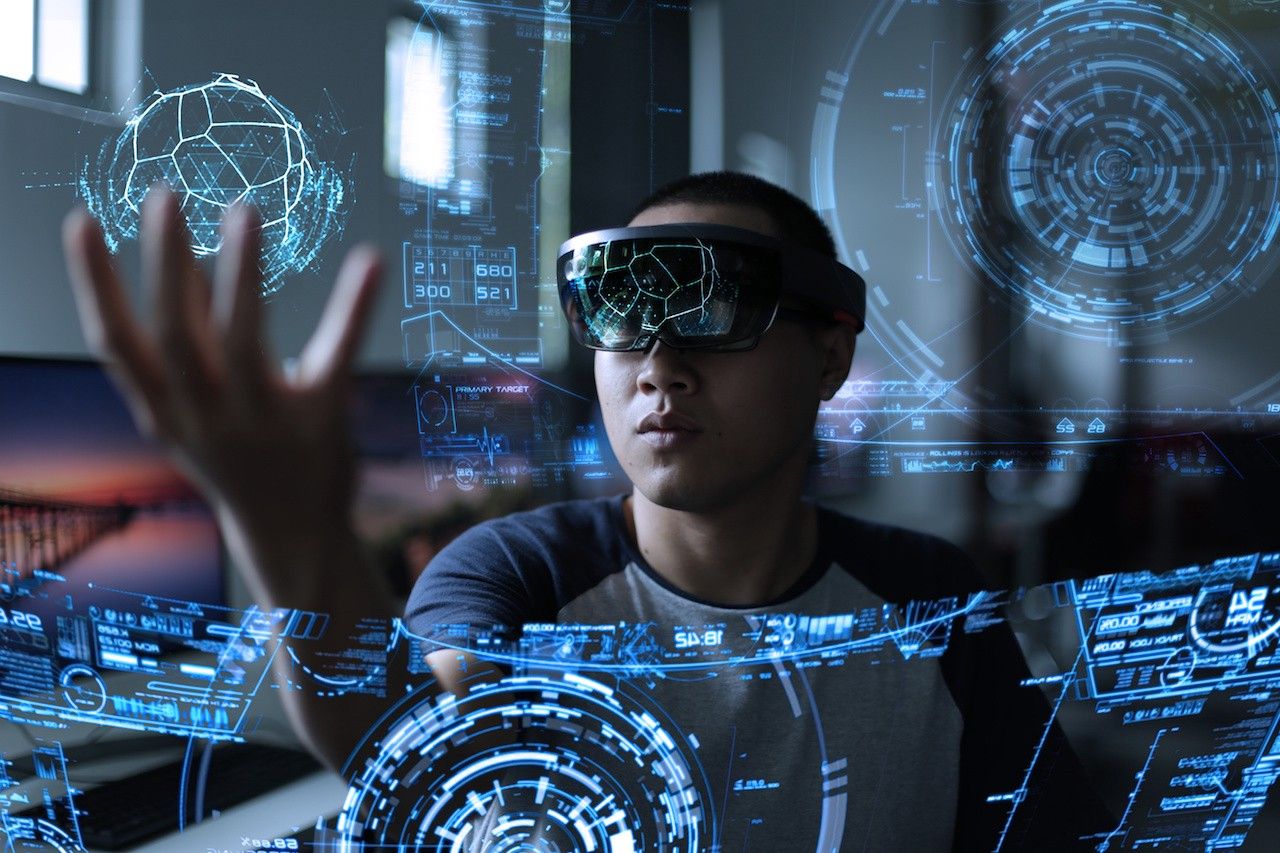In an era of relentless technological advancement, our perception of reality is being profoundly reshaped. The lines between the physical and digital, the tangible and the virtual, are blurring with astonishing speed. This isn’t a mere upgrade of existing tools; it’s a fundamental redefinition of our experiences, interactions, and even our understanding of what constitutes “real.” From immersive virtual worlds to intelligent machines that perceive and act, tech innovations are redefining reality itself. This transformative wave is propelled by breakthroughs in artificial intelligence, extended reality, advanced robotics, and pervasive connectivity, creating a future where our lived experiences are increasingly augmented, simulated, and interconnected in ways previously confined to science fiction.
The Blurring Lines: How Technology Reshapes Perception
To fully grasp the magnitude of how tech innovations are redefining reality, it’s essential to understand the historical context of human-technology interaction and how digital realms are increasingly merging with our physical existence.
A. From Simulation to Immersion: A Historical Arc
Humanity has always sought to simulate and extend reality, from cave paintings to elaborate theatrical productions. Technology has supercharged this innate desire.
- Early Simulations and Media: Photography captured moments, film created moving narratives, and television brought distant events into our homes. These were forms of mediated reality, allowing us to experience things not directly present.
- The Digital Realm’s Emergence: Computers introduced interactive digital spaces. Video games created virtual worlds, albeit simplistic ones. The internet connected us globally, allowing for virtual communities and the sharing of digital information.
- The Quest for Presence: The goal has always been to make these digital experiences feel more “real,” to induce a sense of presence where the user feels truly part of the simulated environment. Early virtual reality attempts were clunky, limited by processing power and display technology.
- Rise of High-Fidelity Graphics: Advances in computer graphics, processing power (especially GPUs), and display technologies enabled increasingly realistic visuals, paving the way for truly immersive experiences.
B. The Convergence: Digital Meets Physical
The current wave of innovation is defined by the convergence of the digital and physical, creating entirely new forms of reality.
- Augmented Reality (AR): AR overlays digital information onto the real world. Think of Snapchat filters, Pokémon GO, or industrial applications where digital instructions appear on a physical machine. It enhances our existing reality.
- Virtual Reality (VR): VR transports users entirely into a simulated digital environment. With headsets, users experience a complete immersion, shutting out the physical world to explore virtual spaces for gaming, training, or remote collaboration.
- Mixed Reality (MR): MR combines elements of both AR and VR, allowing digital objects to interact with the real world in a spatially aware manner. A holographic digital object can appear to sit on your real-world table, and you can interact with it naturally. This represents a true blend of realities.
- Haptic Feedback: Beyond sight and sound, haptic technologies allow users to “feel” digital interactions. This tactile feedback enhances realism and immersion, whether feeling the recoil of a virtual gun or the texture of a digital object.
- Biometric and Brain-Computer Interfaces (BCI): Emerging technologies that connect directly to our biological systems (e.g., eye-tracking for interaction, BCIs allowing direct thought control). This is the ultimate blurring of lines, where our minds directly interface with digital realities.
This convergence isn’t just about entertainment; it’s redefining how we learn, work, communicate, and perceive the world around us.
Core Technologies Driving This Redefinition
Several interconnected technologies are the engines behind this profound reshaping of reality, pushing the boundaries of what’s possible.
A. Advanced Artificial Intelligence (AI) and Machine Learning (ML)
AI is the cognitive backbone, providing the intelligence that makes digital realities responsive, adaptive, and seemingly alive.
- Generative AI: Beyond merely analyzing data, generative AI (e.g., Stable Diffusion, Midjourney, ChatGPT) can create entirely new content—realistic images, immersive environments, compelling narratives, and even complex code. This is rapidly accelerating the creation of digital worlds.
- Computer Vision: AI-powered computer vision enables digital systems to “see” and interpret the physical world, crucial for AR applications that need to understand spatial relationships or robots that navigate complex environments.
- Natural Language Processing (NLP) and Understanding (NLU): Sophisticated NLP/NLU allows humans to interact with digital systems using natural speech or text, making virtual assistants, chatbots, and AI companions more intuitive and “human-like.”
- Reinforcement Learning: AI agents learn to navigate and interact with virtual environments through trial and error, optimizing their behavior to achieve goals, which is critical for creating intelligent NPCs (Non-Player Characters) or autonomous agents in simulated worlds.
- Predictive Analytics: AI can analyze vast datasets to predict user behavior, personalize experiences, or even simulate future outcomes within a digital twin, making digital realities more dynamic and tailored.
B. Extended Reality (XR) Hardware and Software
XR encompasses VR, AR, and MR, providing the interfaces through which we experience these redefined realities.
- High-Resolution Displays: Advances in micro-OLED and other display technologies are leading to lighter, smaller headsets with incredibly high pixel densities, reducing the “screen door effect” and enhancing visual fidelity.
- Advanced Optics and Lenses: Innovations in pancake lenses and waveguide technology enable wider fields of view and slimmer form factors for AR/VR devices, improving comfort and immersion.
- Inside-Out Tracking: Devices that track user movement and position without external sensors, using onboard cameras and SLAM (Simultaneous Localization and Mapping) technology, simplifying setup and increasing freedom of movement.
- Haptic Feedback Devices: From gloves that simulate textures to full-body suits that provide impact feedback, haptics are adding the sense of touch to virtual experiences, vastly increasing immersion.
- Volumetric Capture and Photogrammetry: Technologies that capture real-world objects, people, and environments in full 3D, allowing them to be accurately recreated and integrated into digital worlds, blurring the line between physical capture and virtual creation.
C. High-Speed Connectivity (5G and Beyond)
Ubiquitous, low-latency, high-bandwidth connectivity is the nervous system connecting these redefined realities.
- 5G Networks: 5G provides the necessary bandwidth and ultra-low latency for streaming high-fidelity VR experiences, enabling real-time AR overlays, and facilitating complex multi-user interactions in virtual environments.
- Edge Computing: Processing data closer to the user (at the ‘edge’ of the network) reduces lag for time-sensitive XR applications, ensuring seamless interaction and preventing motion sickness.
- Cloud Streaming of XR: The ability to render complex XR experiences in the cloud and stream them to lighter, less powerful edge devices, democratizing access to high-fidelity virtual worlds.
- Ubiquitous IoT: The proliferation of IoT devices provides real-time data from the physical world, which can be fed into digital twins and augmented realities, creating living, responsive digital counterparts.
D. Blockchain and Decentralized Technologies (Web3)
While often associated with finance, blockchain and Web3 technologies are redefining ownership, identity, and governance within digital realities, particularly the metaverse.
- Digital Ownership (NFTs): Non-Fungible Tokens (NFTs) enable verifiable digital ownership of virtual assets (e.g., virtual land, avatar wearables, in-game items), creating scarcity and value in digital worlds.
- Decentralized Identity: Blockchain can provide self-sovereign digital identities, giving users more control over their personal data and avatars across different metaverse platforms.
- Play-to-Earn and Creator Economies: Web3 models enable users to earn real-world value from their activities and creations within virtual worlds, fostering vibrant, user-driven digital economies.
- Interoperability: The potential for blockchain to facilitate interoperability between different virtual worlds, allowing users to move their assets and identities seamlessly across various platforms, creating a truly open metaverse.
Transformative Impacts: How Reality Is Being Redefined
These tech innovations aren’t just adding new features; they are fundamentally reshaping industries, human behavior, and our very understanding of interaction.
A. Reshaping Communication and Social Interaction
The way we connect and socialize is being radically transformed by immersive digital realities.
- Immersive Social Spaces: VR social platforms allow for highly immersive interactions, where users can share virtual spaces, convey body language through avatars, and engage in more natural communication than traditional video calls.
- Presence Beyond Distance: Remote work and education are redefined as individuals can “be present” in virtual meeting rooms, classrooms, or design studios, fostering a stronger sense of connection despite physical distance.
- Avatar-Based Identity: Users create and inhabit digital avatars, which become extensions of their identity in virtual worlds, enabling new forms of self-expression and social engagement.
- Bridging Physical Gaps: AR allows shared digital content to be viewed and interacted with by multiple people in the same physical space, facilitating collaborative tasks and shared experiences.
B. Revolutionizing Work and Productivity
Digital realities are fundamentally changing how we work, design, train, and collaborate.
- Immersive Training and Simulation: High-fidelity VR simulations allow for realistic training scenarios (e.g., surgical procedures, flight simulations, complex machinery operation) without risk to physical assets or lives. This improves retention and reduces training costs.
- Collaborative Design and Prototyping: Designers and engineers can collaboratively review 3D models in AR/VR, making real-time adjustments and conducting virtual prototyping, accelerating product development cycles and reducing the need for costly physical prototypes.
- Remote Assistance and Maintenance: AR overlays can provide technicians with real-time digital instructions or allow remote experts to guide on-site workers through complex repairs, improving efficiency and reducing travel.
- Virtual Workspaces: The concept of the office expands into the metaverse, with virtual meeting rooms, digital whiteboards, and immersive collaboration tools redefining remote work productivity.
C. Transforming Education and Learning
The traditional classroom is being augmented and transformed by immersive digital experiences.
- Experiential Learning: VR field trips can transport students to historical sites, distant galaxies, or inside the human body, providing immersive learning experiences that are otherwise impossible.
- Interactive Simulations: Complex scientific concepts or engineering principles can be taught through interactive AR/VR simulations, allowing students to manipulate variables and observe immediate outcomes, fostering deeper understanding.
- Personalized Learning Environments: AI-powered adaptive learning platforms combined with XR can create personalized educational paths, adjusting content and difficulty based on individual student progress and learning styles.
- Skill Development: Vocational training benefits immensely from realistic simulations, allowing students to practice dangerous or expensive procedures in a safe, virtual environment.
D. Reshaping Retail, Commerce, and Entertainment
Consumer experiences are becoming increasingly immersive, personalized, and interactive.
- Virtual Showrooms and Try-Ons: Consumers can virtually try on clothes, place furniture in their living rooms via AR, or explore digital showrooms for cars or homes, revolutionizing online shopping and reducing returns.
- Metaverse Commerce: New economies are emerging within virtual worlds, where users can buy, sell, and trade digital assets (often as NFTs) and interact with virtual brand experiences.
- Immersive Gaming and Entertainment: VR gaming offers unparalleled levels of immersion, while live events (concerts, sports) are finding new life in the metaverse, allowing for global participation and unique interactive experiences.
- Contextual Marketing: AR can deliver context-aware marketing messages (e.g., pointing your phone at a building shows its history or current restaurant specials), blending advertising with the real world.
E. New Frontiers in Healthcare and Wellness
Digital reality technologies are offering groundbreaking applications in medicine, therapy, and overall well-being.
- Surgical Planning and Training: Surgeons can use VR to plan complex operations and practice procedures on highly realistic digital patient twins, improving outcomes and reducing risks.
- Pain Management and Therapy: VR is being used for distraction therapy during painful medical procedures, phobia treatment (e.g., fear of heights), and rehabilitation by creating controlled, safe environments for exposure therapy or physical exercises.
- Mental Health Support: Immersive environments can provide calming spaces for meditation or deliver guided therapy sessions, offering accessible mental wellness support.
- Medical Visualization: Doctors can visualize complex anatomical structures in 3D through AR/VR, aiding diagnosis and patient education.
Challenges and Considerations in This Reality Redefinition
While the promise of these tech innovations is immense, their widespread adoption and the ethical implications of redefining reality present significant hurdles that must be carefully navigated.
A. Hardware Accessibility and Affordability
Despite advancements, high-quality XR hardware (VR headsets, AR glasses) remains relatively expensive and not yet mainstream for the average consumer.
- Cost Barrier: The high cost limits widespread adoption, particularly for devices that offer truly immersive experiences.
- Form Factor and Comfort: Current headsets can be bulky, heavy, and cause discomfort or ‘VR sickness’ for some users after extended use. Miniaturization and ergonomic design are ongoing challenges.
- Computational Power: Driving high-fidelity immersive experiences requires significant processing power, often tied to expensive GPUs or powerful edge devices, limiting standalone capabilities.
B. Interoperability and Fragmented Ecosystems
The emerging digital reality landscape, especially the metaverse, is highly fragmented.
- Walled Gardens: Many platforms operate as ‘walled gardens,’ making it difficult for users to move their avatars, digital assets, or even identities seamlessly between different virtual worlds or applications.
- Lack of Standards: A lack of common standards for digital asset formats, identity management, and interaction protocols hinders true interoperability and limits the growth of a truly open metaverse.
- Data Silos: Information and experiences remain siloed within proprietary platforms, preventing a unified digital reality.
C. Privacy, Security, and Data Governance
As more of our lives move into digital and immersive spaces, critical concerns about privacy and security intensify.
- Biometric Data Collection: XR devices can collect highly sensitive biometric data (eye movements, facial expressions, body tracking). Protecting this data from misuse and ensuring user consent is paramount.
- Digital Identity Theft: The rise of digital avatars and persistent online identities creates new avenues for identity theft, impersonation, and fraud.
- Cybersecurity in Immersive Environments: New attack vectors emerge in virtual worlds, from malicious code within virtual assets to social engineering within immersive social spaces.
- Data Governance in the Metaverse: Who owns the data generated in virtual worlds? How is it regulated across international borders? These questions require new legal and ethical frameworks.
D. Ethical and Societal Implications
The profound impact of redefining reality raises complex ethical and societal questions.
- Digital Addiction and Disconnection: The increased immersion could lead to digital addiction, social isolation in the physical world, and a blurring of lines that makes it difficult for individuals to distinguish between real and virtual.
- Misinformation and Disinformation: Immersive deepfakes and highly realistic synthetic media could make it even harder to discern truth from falsehood, posing significant challenges to societal trust and democratic processes.
- Digital Divide: Unequal access to high-speed internet and expensive XR hardware could exacerbate existing digital divides, creating a new form of inequality where only a privileged few can fully participate in the most advanced digital realities.
- Psychological Impact: The long-term psychological effects of prolonged immersion in virtual worlds, avatar-based interaction, and the blurring of reality are not yet fully understood and require extensive research.
- Ownership and Creator Rights: In decentralized metaverse economies, ensuring fair compensation and clear intellectual property rights for digital creators is a complex challenge.
E. Content Creation and Development Scalability
Creating compelling, high-fidelity, and diverse content for immersive digital realities is immensely resource-intensive.
- Talent Shortages: A scarcity of skilled developers, 3D artists, AI engineers, and experience designers capable of building sophisticated XR and metaverse content.
- Development Costs: The cost of producing high-quality virtual environments, realistic avatars, and interactive experiences is currently very high.
- Tooling Maturity: While improving, the tools for building truly scalable and interconnected metaverse experiences are still evolving and lack the maturity of traditional web or mobile development tools.
Best Practices for Navigating the Redefined Reality
To effectively leverage tech innovations that redefine reality while mitigating their challenges, organizations and individuals must adopt a strategic, responsible, and user-centric approach.
A. Prioritize Human-Centric Design and Ethical AI
Place the human experience at the absolute center of your design process.
- User Empathy: Deeply understand user needs, behaviors, and potential psychological impacts of immersive experiences.
- Ethical AI Principles: Implement strong ethical guidelines for AI development, ensuring fairness, transparency, accountability, and minimizing bias in generative models and decision-making systems.
- Digital Wellbeing: Design features that promote healthy digital habits, prevent addiction, and offer user control over their immersion levels.
- Transparency: Be transparent about the use of AI, data collection, and virtual content to build user trust.
B. Invest in Foundational Technologies and Talent
Building future realities requires robust technical foundations and skilled personnel.
- Cloud and Edge Infrastructure: Invest in scalable cloud computing infrastructure and strategic edge computing deployments to support high-fidelity, low-latency XR experiences.
- AI/ML Capabilities: Develop in-house AI/ML expertise for data analysis, content generation, and intelligent system behavior.
- Cross-Functional Teams: Build interdisciplinary teams combining 3D artists, game developers, UI/UX designers, AI/ML engineers, and ethicists to tackle the complexity of digital reality creation.
- Continuous Learning: Foster a culture of continuous learning and adaptation, as these technologies evolve rapidly.
C. Focus on Interoperability and Open Standards
To build a truly expansive and inclusive digital reality, move beyond proprietary ‘walled gardens.’
- Support Open Standards: Advocate for and adopt open standards for 3D content (e.g., glTF), digital identity, and communication protocols to enable seamless asset and avatar transfer between platforms.
- API-First Approach: Design systems with robust APIs to facilitate integration and foster an ecosystem of interconnected applications and experiences.
- Decentralized Identity Solutions: Explore and implement self-sovereign identity solutions based on blockchain to give users control over their digital personas across multiple virtual spaces.
D. Implement Robust Security, Privacy, and Governance
Proactive and comprehensive strategies are essential to protect users and systems in redefined realities.
- Data Minimization: Collect only the necessary user data and implement strong data encryption both at rest and in transit.
- Granular Access Control: Use robust Identity and Access Management (IAM) to control who can access and interact with sensitive data and virtual assets.
- Proactive Cybersecurity: Implement advanced threat detection, vulnerability management, and incident response plans specifically tailored for XR and metaverse environments.
- Adhere to Regulations: Stay abreast of evolving data privacy regulations (e.g., GDPR, CCPA) and contribute to the development of new legal and ethical frameworks for digital realities.
E. Create Compelling Content and Purpose-Driven Experiences
Beyond the technology, the value lies in the content and experiences.
- High-Quality Content: Focus on creating visually stunning, engaging, and meaningful content that leverages the unique capabilities of XR.
- Problem-Solving Focus: Identify real-world problems that can be uniquely solved or significantly enhanced by redefined realities (e.g., remote training, virtual collaboration, personalized therapy).
- Iterative Development: Adopt agile methodologies for content creation, continuously gathering user feedback and iterating on experiences to optimize engagement and value.
- Storytelling: Use the immersive nature of XR to tell compelling stories, whether for entertainment, education, or brand building.
F. Build for Accessibility and Inclusivity
Ensure that these new realities are accessible to a broad and diverse audience.
- Adaptive Interfaces: Design interfaces that can adapt to various input methods, sensory needs, and cognitive abilities.
- Inclusive Avatars: Provide diverse avatar customization options that represent a wide range of body types, ethnicities, and gender identities.
- Language and Localization: Ensure experiences are available in multiple languages and culturally relevant.
- Physical Accessibility: Consider the physical setup and mobility needs when designing XR environments.
The Future Trajectory of Redefining Reality
The journey of redefining reality through tech innovations is just beginning. The coming decades promise an even more profound intertwining of our physical and digital existences, creating a future that is both exciting and complex.
A. Pervasive and Seamless XR Integration
XR devices will become lighter, more comfortable, and eventually indistinguishable from everyday eyewear or contact lenses.
- Always-On AR: Augmented reality will seamlessly overlay digital information onto our real world, providing contextual data, navigational cues, and interactive elements without requiring conscious activation.
- Personalized Digital Twins: Individuals will have highly personalized “digital twins” of themselves, their homes, or their environments, constantly updated with real-time data, enabling hyper-personalized experiences and interactions.
- Ubiquitous Immersive Spaces: Access to high-fidelity virtual worlds will be as simple as opening a browser, accessible from anywhere, fostering constant presence and collaboration.
B. Autonomous Digital Beings and AI Companions
AI will evolve beyond reactive assistants to become sophisticated, autonomous digital beings.
- AI-Driven NPCs and Avatars: Virtual worlds will be populated by highly intelligent and emotionally responsive AI characters, blurring the line between human and artificial interaction.
- Personal AI Companions: AI companions will live across our digital and physical realities, learning our preferences, anticipating our needs, and providing seamless assistance in work, learning, and daily life.
- Generative Reality Creation: AI will dynamically generate and modify virtual environments, assets, and narratives in real-time, creating truly infinite and unique digital worlds.
C. Brain-Computer Interfaces (BCI) for Direct Interaction
The ultimate interface will bypass traditional physical inputs, connecting directly to our thoughts.
- Direct Thought Control: BCIs will allow users to navigate digital worlds, control devices, and even communicate directly using their thoughts, revolutionizing accessibility and interaction.
- Sensory Enhancement: BCIs could eventually allow for direct sensory input into the brain, creating experiences that bypass physical senses entirely, or even augmenting them.
- Ethical Frontier: This technology raises profound ethical questions about mental privacy, identity, and the very nature of consciousness.
D. The Open Metaverse and Interoperable Digital Economies
The fragmented digital realities of today will coalesce into a more open and interoperable metaverse.
- Universal Avatars and Assets: Users will own their digital identities and assets, moving them freely between different virtual worlds, fostering a truly open and user-owned digital economy.
- Cross-Platform Experiences: Developers will build experiences that function seamlessly across various XR hardware and software platforms.
- Real-World Asset Tokenization: More real-world assets will be tokenized on the blockchain, allowing them to be represented, traded, and interacted with within digital realities.
E. Redefining Human Potential and Experience
The most significant impact will be on human potential and the nature of our experiences.
- Cognitive Augmentation: AI and digital interfaces will enhance our cognitive abilities, allowing us to process information faster, recall memories more accurately, and learn more efficiently.
- Empathy and Connection: Immersive digital realities could foster greater empathy by allowing users to experience different perspectives or connect with others in ways previously impossible.
- New Art Forms and Creativity: The tools of reality redefinition will unlock entirely new forms of artistic expression and creative endeavors, pushing the boundaries of human imagination.
- Ethical Governance of Digital Realities: Societies will increasingly grapple with and establish governance frameworks for these new realities, addressing issues of digital rights, safety, and equitable access.
Conclusion
The pervasive influence of tech innovations redefining reality is undeniable. We are witnessing a monumental shift from passively consuming digital content to actively inhabiting and interacting within intelligent, immersive digital worlds. This revolution, powered by the synergistic advancements in artificial intelligence, extended reality, high-speed connectivity, and decentralized technologies, is fundamentally altering our communication, work, education, commerce, and even our understanding of what it means to be present.
While the promise of enhanced efficiency, unprecedented connection, and limitless creativity is immense, the journey ahead is complex, fraught with challenges related to accessibility, privacy, security, and profound ethical considerations. Successfully navigating this new frontier demands a human-centric approach, a commitment to interoperability, robust security protocols, and a continuous, proactive engagement with the societal implications of these powerful technologies. As the lines between our physical and digital lives continue to blur, these innovations are not merely changing our tools; they are meticulously crafting the very fabric of our future experiences, truly redefining reality and charting the course for the next chapter of human evolution.














